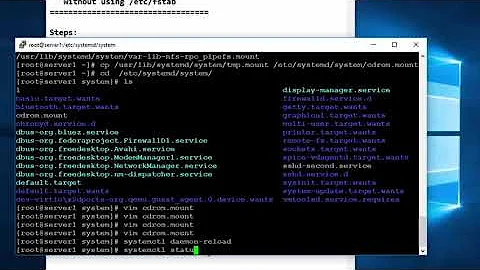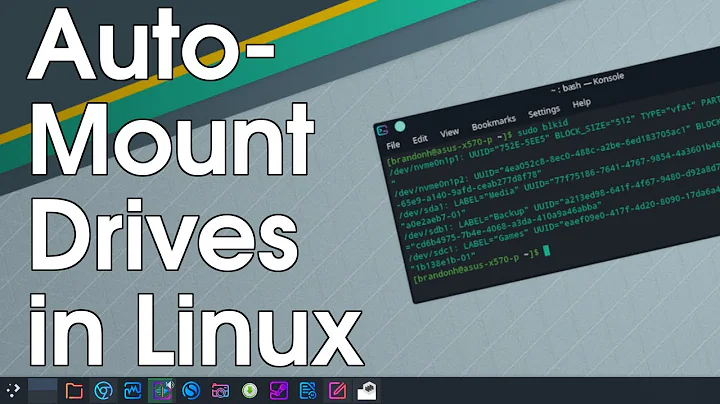How to automatically mount remote directories on login / startup
Indeed, .bashrc isn't right. That file is read when you open a terminal running an interactive shell (if your shell is bash).
You can perform sshfs mounts at boot time, but that only works if you don't need any interactive authentication: in most setups this means a passwordless key. (There are other ways, but they only apply inside trusted networks where you would typically already have something like NFS.)
-
If you're root, you can add an entry in
/etc/fstab. Note that this will use root's~/.sshto look up keys and known hosts.example.com:/remote/path /mount/point fuse.sshfs idmap=user,uid=1234 -
You can put an
@rebootcrontab entry.@reboot sshfs -o idmap=user example.com:/remote/path /mount/point
If you need to type a password to send to the remote server, you need to log in and have a user interface available first. Same thing if you need to type a password to unlock a key.
Most window managers and desktop environments allow you to run custom commands when you log in. You can run a snippet like the following (assuming your environment already starts an SSH agent — most do these days):
SSH_ASKPASS=ssh-askpass ssh-add ~/.ssh/id_rsa
mount | grep ' /mount/point ' ||
sshfs -o idmap=user example.com:/remote/path /mount/point
mount | grep ' /mount/point ' || checks whether the filesystem appears to be mounted already, in case you log in through multiple means.
Alternatively, without using an agent:
mount | grep ' /mount/point ' ||
SSH_ASKPASS=ssh-askpass sshfs -o idmap=user example.com:/remote/path /mount/point
If you don't have the ssh-askpass program, another method is to open a terminal just to do the mounting:
xterm -e 'ssh-add ~/.ssh/id_rsa'
mount | grep ' /mount/point ' ||
sshfs -o idmap=user example.com:/remote/path /mount/point
For a text mode log in, put ssh-add in your ~/.profile. Run it only if the shell is interactive.
case $- in
*i*)
ssh-add ~/.ssh/id_rsa
;;
esac
sshfs -o idmap=user example.com:/remote/path /mount/point
Related videos on Youtube
Krutik
Updated on September 18, 2022Comments
-
Krutik almost 2 years
Everytime I boot, I use
sshfsto mount remote directories. I am thinking to put these short commands in my .bashrc, but that does not seem to be The Right Way™.What is the proper way to run
sshfson login? -
cheshirecatalyst over 11 yearsThis wouldn't work as written for per-user fuse mounts like sshfs.
-
 Mayur A Muley over 9 yearsWe have some issues where this mount (from
Mayur A Muley over 9 yearsWe have some issues where this mount (from.bash_profile) will not work if the user logs in shortly after boot - the network (wifi) isn't up yet. A possible solution might be running a script on network up.




